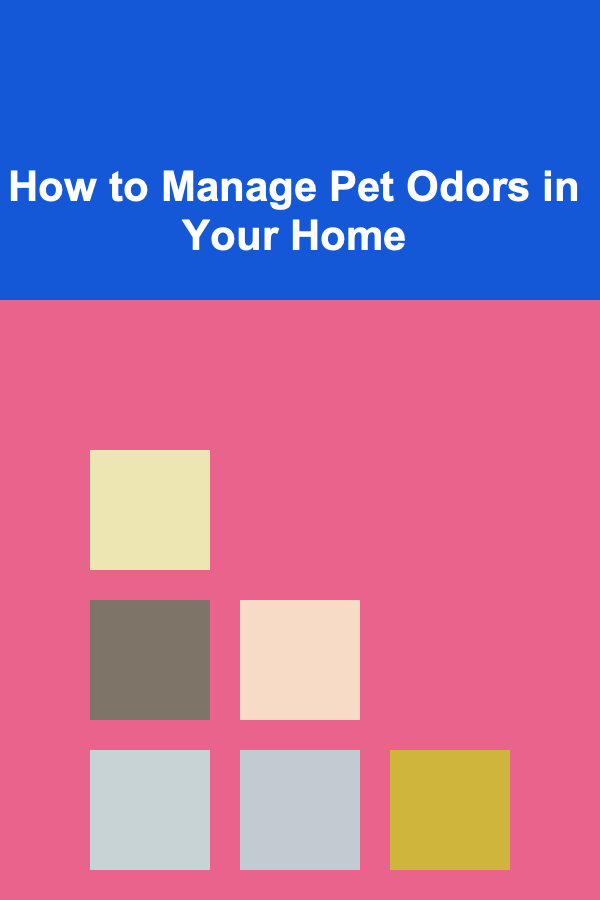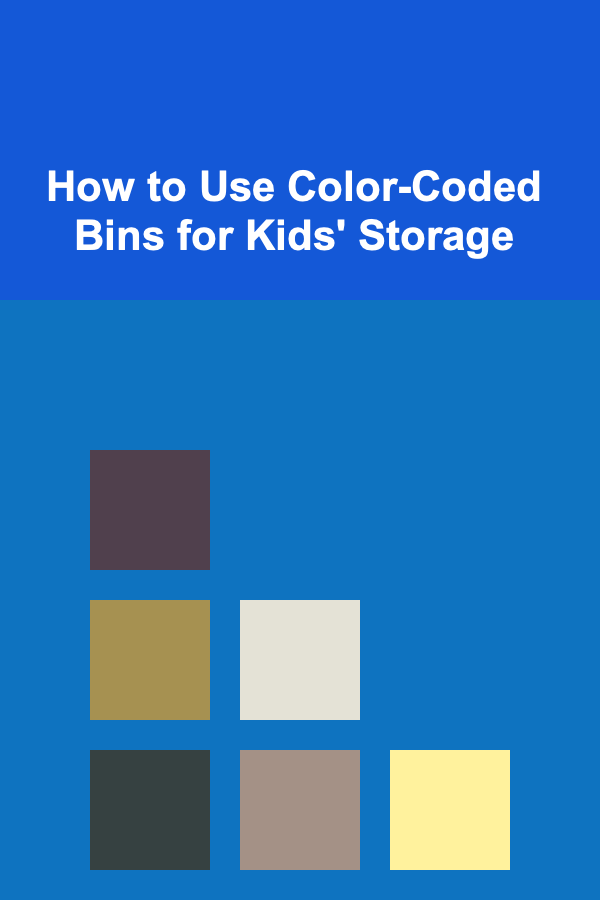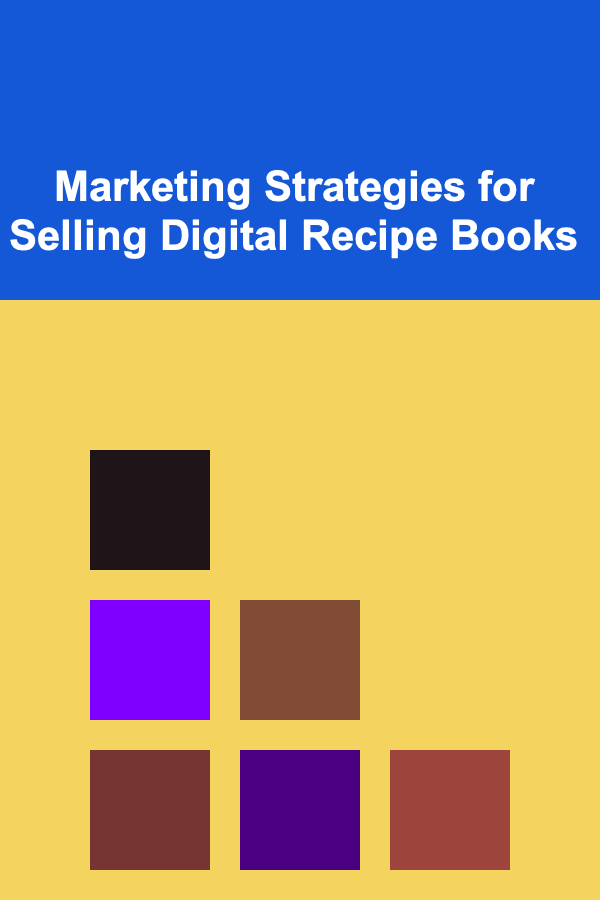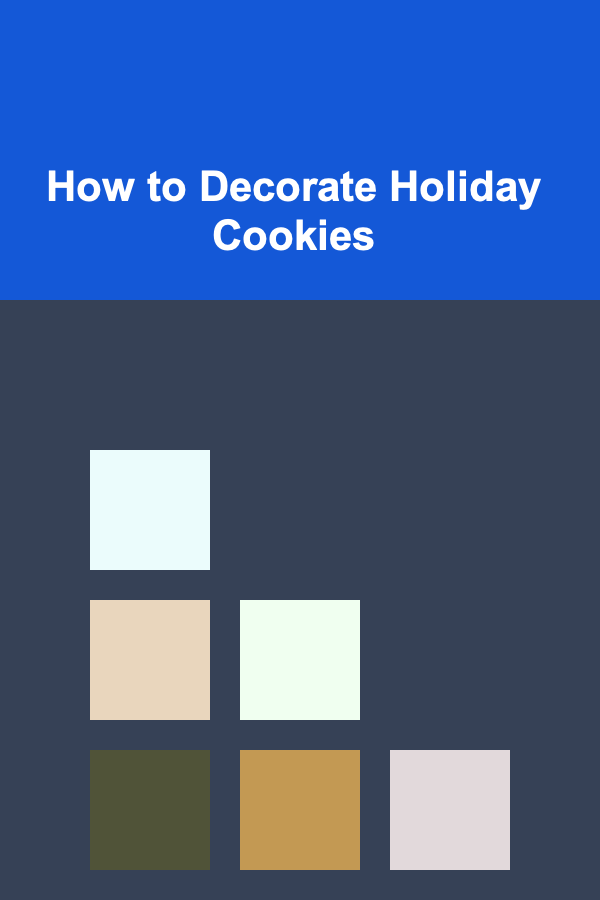
How To Partner with Artists for Exclusive POD Designs
ebook include PDF & Audio bundle (Micro Guide)
$12.99$7.99
Limited Time Offer! Order within the next:

Print-on-demand (POD) services have revolutionized the way entrepreneurs and creatives design, produce, and sell custom merchandise. The POD model allows for flexibility and low upfront costs, making it easier for artists and brands to enter the market without the need for large investments in inventory or production equipment. However, to stand out in the saturated POD marketplace, offering exclusive and unique designs can make all the difference. One of the most effective ways to create such designs is by partnering with talented artists.
In this article, we will explore the step-by-step process of partnering with artists to create exclusive POD designs. We will cover everything from identifying the right artists to negotiating fair terms and ensuring a smooth collaboration. Whether you're a brand looking to expand your product offerings or an artist eager to collaborate with others, this guide provides a comprehensive approach to building successful partnerships in the POD world.
Understanding Print-On-Demand (POD) and Its Potential
Before diving into how to partner with artists for exclusive POD designs, it's important to understand the fundamentals of the POD model and the opportunities it presents. POD is a business model where products like t-shirts, hoodies, mugs, posters, and more are created only when a customer places an order. This eliminates the need for inventory and reduces financial risks for the business owner.
The POD model is beneficial because:
- Low Startup Costs: Since products are only printed after an order is placed, there's no need for significant upfront investment in stock.
- Customization: POD allows for customization, meaning customers can get unique designs tailored to their preferences.
- Scalability: As demand increases, businesses can scale up quickly without worrying about stock management.
In this context, partnering with artists can add significant value to the POD business. Unique, high-quality, and exclusive designs can attract more customers, set a brand apart from competitors, and drive more sales.
Identifying the Right Artists for Your POD Designs
Choosing the right artist for your POD designs is crucial to the success of your collaboration. The artist's style, creativity, and experience should align with your brand values and the target market you wish to serve. Here are some strategies to identify and approach the right artists:
2.1. Define Your Brand's Aesthetic
Before you start searching for artists, it's essential to have a clear understanding of your brand's aesthetic and the type of designs you want to offer. Are you looking for minimalist designs, vintage-inspired graphics, or bold, modern illustrations? Identifying your brand's visual language will guide you in selecting artists whose style complements your vision.
2.2. Use Artist Platforms
There are several online platforms where you can discover talented artists looking for collaboration opportunities. Some popular platforms include:
- Behance: A creative community where professional artists and designers showcase their portfolios.
- Dribbble: A platform for discovering designers who specialize in digital art, web design, and illustrations.
- Instagram: A social media platform that allows artists to share their work and build a following. Searching relevant hashtags can help you find artists with styles that match your needs.
2.3. Explore Online Marketplaces
Online marketplaces like Etsy, Redbubble, and Society6 feature a wide range of independent artists selling their work. These platforms often have POD-integrated options, making it easier to assess an artist's ability to create designs suited for print products. Additionally, these marketplaces can provide insights into an artist's customer base and the popularity of their designs.
2.4. Assess the Artist's Portfolio
Once you've identified potential artists, take the time to evaluate their portfolio. Look for the following factors:
- Quality of Work: Ensure the artist produces high-quality designs with attention to detail.
- Relevance to Your Brand: The artist's style should align with your brand identity and appeal to your target audience.
- Previous Collaborations: Check if the artist has worked on similar projects, especially in the POD space. If they have experience designing for POD, they will likely understand the technical and creative requirements for such products.
2.5. Consider Up-and-Coming Artists
While established artists are always a safe bet, don't overlook emerging talent. Up-and-coming artists often offer fresh, innovative designs and are open to collaborating at more flexible rates. They might also be more motivated to invest time and effort into building a long-term partnership.
Approaching Artists: How to Start the Conversation
Once you've identified a few artists whose work resonates with your brand, the next step is to approach them and initiate a collaboration. How you communicate with the artist will set the tone for the entire partnership, so it's important to be respectful, clear, and professional.
3.1. Craft a Personalized Message
When reaching out to an artist, avoid generic or mass emails. A personalized message shows that you've taken the time to understand their work and are genuinely interested in collaborating. Your message should include:
- Who You Are: Introduce yourself and your business. Explain what your brand stands for and the types of products you sell.
- Why You're Interested: Be specific about why you want to collaborate with the artist. Mention what you admire about their style and how you think their work would fit with your brand.
- Proposed Collaboration: Outline the details of the collaboration, including the types of designs you're interested in, the number of designs you'd like, and any specific themes or concepts you have in mind.
- Compensation: Clearly state how you plan to compensate the artist, whether it's a flat fee, royalties, or a revenue split.
3.2. Be Transparent About Expectations
Establishing clear expectations from the start is key to avoiding misunderstandings later. Discuss the following aspects upfront:
- Design Rights: Make sure both parties understand the ownership and usage rights of the designs. Will the artist retain the rights, or will you have exclusive use of the designs?
- Timeline: Set realistic deadlines for the delivery of designs and any revisions.
- Compensation: Agree on the payment structure, whether it's a one-time fee or a percentage of sales. Be transparent about payment terms and timelines.
- Marketing: Discuss how the designs will be marketed and whether the artist will have any involvement in the promotion.
Negotiating the Terms of the Collaboration
Negotiating the terms of a partnership is crucial to ensure that both you and the artist feel valued and fairly compensated. Here are some important factors to consider during the negotiation process:
4.1. Payment Structure
There are several ways to compensate an artist, and the best method depends on your business model and the artist's preferences. Common payment structures include:
- Flat Fee: A one-time payment for each design or for the entire project.
- Royalties: The artist receives a percentage of sales generated by their designs. This option is appealing to artists because they can earn passive income from their work.
- Revenue Split: A percentage split of the revenue between the brand and the artist, which can be negotiated based on the level of involvement and contribution.
Make sure both parties are comfortable with the payment structure, and be clear about the payment schedule.
4.2. Design Ownership and Rights
It's essential to address intellectual property (IP) rights early in the negotiation process. In most cases, POD designs will be transferred to the brand for exclusive use, but the artist may want to retain ownership of the original work for their portfolio. Discuss the following:
- Exclusivity: Will the designs be exclusive to your brand, or can the artist sell them elsewhere? Exclusivity typically increases the value of the designs but may come at a higher cost.
- Licensing: If the artist is providing designs under a license, clarify the scope of the license. For example, are the designs licensed for use on certain types of products only?
- Credit and Attribution: Decide whether the artist will be credited on product listings, social media posts, or marketing materials.
4.3. Revision Policy
Clarify how revisions will be handled. Some artists may offer a certain number of revisions as part of the initial agreement, while others may charge additional fees for extensive changes. Establishing this upfront will prevent any confusion later on.
4.4. Timeline and Deadlines
Set clear deadlines for the design process, keeping in mind the production and launch schedules. Be realistic about the time needed for the artist to complete the designs and factor in time for feedback and revisions. Both parties should agree on a timeline and commit to meeting deadlines.
Managing the Collaboration and Maintaining a Healthy Relationship
Once the partnership is in place, it's important to manage the collaboration effectively to ensure its success. Building a long-term, positive relationship with the artist can lead to future collaborations and mutual benefits.
5.1. Provide Feedback Constructively
When working with an artist, offering feedback is part of the process. Be constructive and specific with your feedback, focusing on what works and what needs improvement. Avoid being overly critical, and always maintain a collaborative tone.
5.2. Stay Transparent and Professional
Communication is key to any successful partnership. Keep the artist informed about the progress of the project, sales numbers, and any changes in direction. Professionalism and transparency help build trust and ensure a smooth workflow.
5.3. Respect the Artist's Time and Effort
Respecting the artist's time is vital. Avoid unrealistic expectations or constant last-minute changes. If you need additional designs or alterations, make sure you compensate the artist fairly and with ample time to complete the work.
5.4. Acknowledge the Artist's Contribution
Artists appreciate recognition for their work. Acknowledging their contributions on your website, social media, and product listings can help build a stronger working relationship and boost the artist's visibility.
Conclusion
Partnering with artists for exclusive POD designs is a powerful way to differentiate your brand and offer unique products that stand out in the competitive marketplace. By following the steps outlined in this article---identifying the right artist, approaching them professionally, negotiating fair terms, and managing the collaboration effectively---you can build strong, mutually beneficial partnerships that result in high-quality, exclusive designs that resonate with your audience.
Whether you're a small business owner or a large brand, collaborating with artists opens up a world of creative possibilities that can elevate your POD offerings and drive success in the ever-growing e-commerce space.
Reading More From Our Other Websites
- [Organization Tip 101] How to Streamline Your Online Shopping Experience
- [Home Lighting 101] How to Make Your Home More Inviting with Warm Lighting
- [Survival Kit 101] How to Build a Survival Kit for Urban Gardeners Facing Unexpected Weather Extremes
- [Home Pet Care 101] How to Create a Home Pet Spa Day: Essential Oils and Aromatherapy for a Relaxing Experience
- [Home Renovating 101] How to Plan and Install Plumbing for a New Bathroom
- [Organization Tip 101] How to Implement a Color-Coding System for Your Papers
- [Home Holiday Decoration 101] How to Style a Cozy Holiday Living Room with Holiday Pillows and Throws
- [Home Family Activity 101] How to Stargaze from Your Backyard: A Simple Guide for Family Astronomical Fun
- [Home Soundproofing 101] How to Create a Quiet Home Office for Remote Work
- [Trail Running Tip 101] How to Develop Mental Resilience for Isolated Mountain Trail Segments

How to Build a Checklist for Reviewing Website Design and Aesthetics
Read More
How to Clean and Maintain Your Dishwasher for Longevity
Read More
How to Manage Pet Odors in Your Home
Read More
How to Use Color-Coded Bins for Kids' Storage
Read More
Marketing Strategies for Selling Digital Recipe Books
Read More
How to Decorate Holiday Cookies
Read MoreOther Products

How to Build a Checklist for Reviewing Website Design and Aesthetics
Read More
How to Clean and Maintain Your Dishwasher for Longevity
Read More
How to Manage Pet Odors in Your Home
Read More
How to Use Color-Coded Bins for Kids' Storage
Read More
Marketing Strategies for Selling Digital Recipe Books
Read More